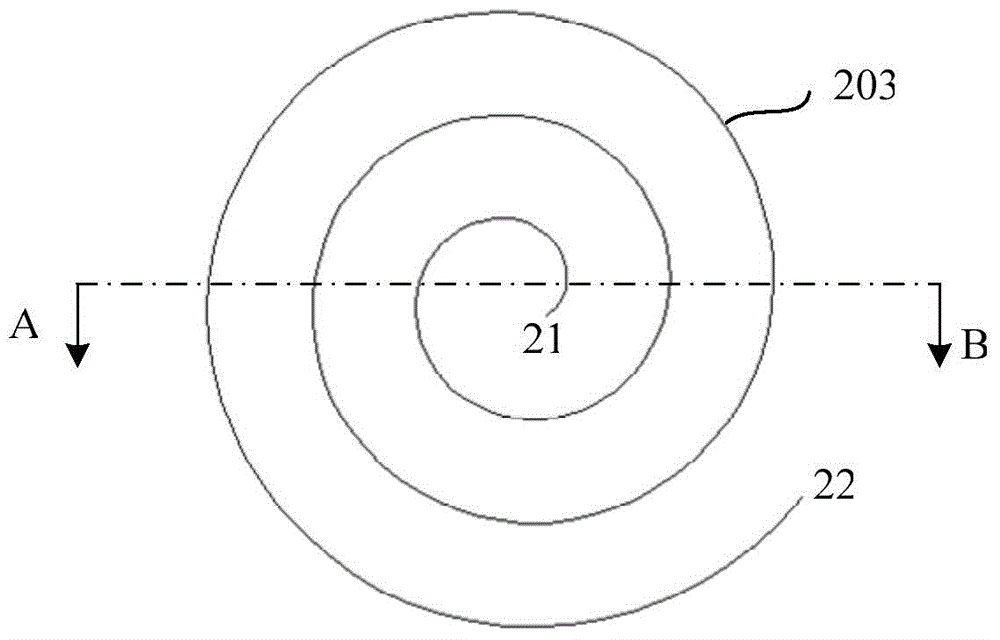Electronic tag
An electronic tag and radio frequency identification technology, applied in the field of radio frequency identification, can solve the problems affecting the electrical performance of radio frequency identification antennas, the low repeatability of the coils of radio frequency identification antennas, and the large space of radio frequency identification antennas, etc., to achieve volume reduction and occupied area The effect of small size and simple process
- Summary
- Abstract
- Description
- Claims
- Application Information
AI Technical Summary
Problems solved by technology
Method used
Image
Examples
Embodiment Construction
[0018] As mentioned in the background technology, the radio frequency identification antenna in the prior art is directly formed by metal wires and wires. The diameter of the metal wire and wires is relatively large, so that the space occupied by the formed radio frequency identification antenna increases, and the radio frequency identification antenna formed by winding The three-dimensional structure of the antenna will also increase the space occupied by the RFID antenna. In addition, the distance between the adjacent coils of the RFID antenna formed by winding and embedding wires is not easy to control, making the repeatability of the coil Lower, which reduces the electrical performance of the RFID antenna.
[0019] An embodiment of the present invention provides an electronic tag and a method for forming the same. A radio frequency identification antenna is formed on the first area of the carrier board, the radio frequency identification antenna includes a first end and a...
PUM
 Login to View More
Login to View More Abstract
Description
Claims
Application Information
 Login to View More
Login to View More - R&D
- Intellectual Property
- Life Sciences
- Materials
- Tech Scout
- Unparalleled Data Quality
- Higher Quality Content
- 60% Fewer Hallucinations
Browse by: Latest US Patents, China's latest patents, Technical Efficacy Thesaurus, Application Domain, Technology Topic, Popular Technical Reports.
© 2025 PatSnap. All rights reserved.Legal|Privacy policy|Modern Slavery Act Transparency Statement|Sitemap|About US| Contact US: help@patsnap.com



